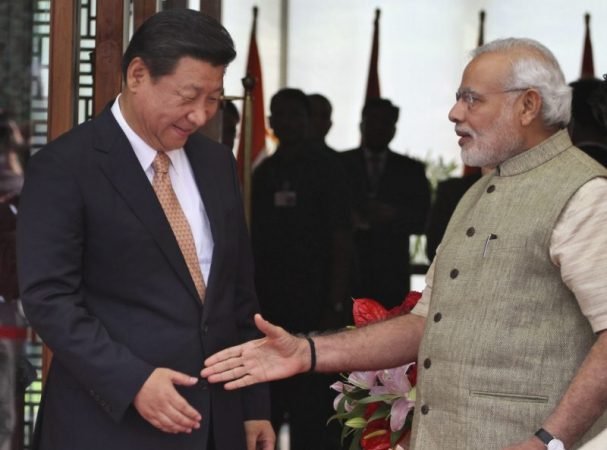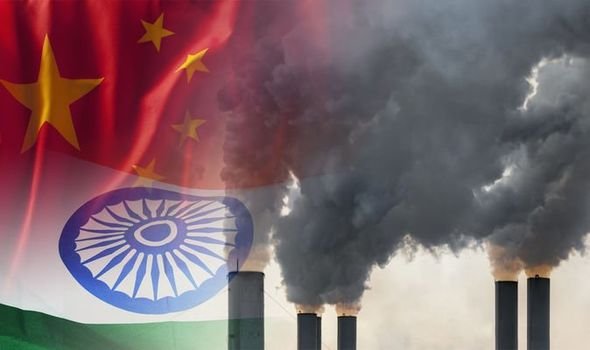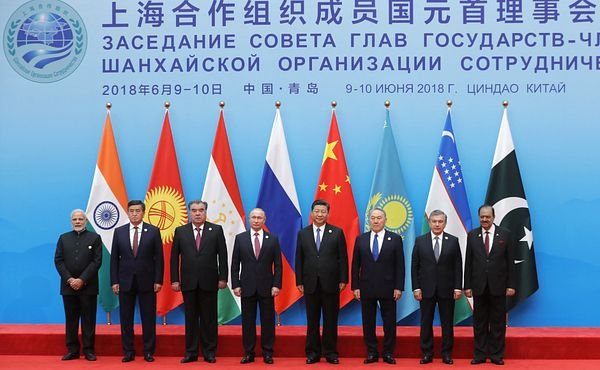Climate Action could be the new common ground for India – China Relations

The Sixth Assessment IPCC report on Climate Change has revealed clearly than ever before as to how human activity has been wreaking havoc on our ecosystems and this has certainly started ringing alarm bells. “Code red for humanity” has been sounded. We are officially in a climate cataclysm, lackadaisical action on this front over the past two decades has pushed matters to extents that are now over and above-grade levels. Perhaps even concerted efforts now would fall short in altering the trajectory meaningfully.
While the climate is riled up, so are the bilateral relations between the behemoths of India and China. Relations had exhibited a relatively less bumpy trend with quite a camera dearie between Prime Minister Narendra Modi and President Xi Jinping in Mahabalipuram 2019 informal summit. The Dokalam standoff seemed no longer as a huge bone of contention on the way forward with trade talks and cooperation on regional development projects in South Asia. Sister state relationships between Tamil Nadu and Fujian signalled a subdued de- hyphenation of border issues and broader foreign policy; as is generically the case with Sino-Indian diplomatic engagement. Then came in 2020 and while the US was sabre-rattling the China virus narrative, the calm of the India- China relationship was breached with the Galwan valley crisis. The countries got embroiled in a conflict leading to human casualties on both sides. Chinese incursions into Ladakh had destabilized the relations yet again, kicking off a phase of political brinkmanship on either side, along with a botched up, ill-thought-out QUAD alliance that helped no cause. Even after a year and multiple military level resolution talks on the ground, mutual pullbacks, the atmosphere remains salty.
Current concerns
However, the arch nemesis lurks in the shadows and is rearing its head very often, excessive rainfall in the Chinese heartland, massive flooding, ever stronger cyclones ravaging the coasts. Rising sea levels on the horizon are threatening the most populous areas in China and the coastal population centres in India. Air pollution is plaguing Indian and Chinese megacities creating an immense reservoir of future carcinogen inflicted population waiting to come to the foray, affecting economic growth and pressuring healthcare systems soon. Red flags, one after another is clearly pointing to a cataclysmic climate change trend that could in all probability have debilitating effects on human society very well within the next decade.

According to recent NASA estimates the east and west coast of India is perilously vulnerable to rising sea levels, with cities such as Mumbai, Chennai, Coimbatore facing imminent submersion. The same is true of Shanghai, Hong Kong, Shenzen, Fuzhou, Qingdao. Excessive localised rainfall has led to flooding in both countries with China reeling under disastrous floods every year, dams failing to hold off or control such events. These floods are already damaging property worth millions, disrupting normal lives and displacing people in such areas. Air pollution in the cities is no new phenomenon, Indian and Chinese cities rank the worst in air quality indexes. Water pollution through commercialised agriculture and industrial waste is a major concern endangering stressed freshwater resources in both nations. Climate change is a terrifying impending chasm, ever more so for the most populous nations.
Why India and China can and need to cooperate
Another facet of commonality of the two nations is that they still are middle-income nations developing at breakneck speed. With their ballooning populations, especially India’s, their macroeconomic aims are aligned at best- positive growth in all sectors, improving per capita GDP and raising the living standards of the population. The sacrifices and steps they would take towards environmental protection and preservation too would be naturally on similar lines.
Coming onto their energy portfolio both are heavily dependent on coal and petroleum or fossil fuels. Shifting to renewable sources of energy by replacing coal and fossil fuels is no mean feat. Considering how minuscule the contributions have been from the affluent and developed global north it would require a lot of economic sacrifices to be made in the short term for a long term goal. With the pandemic slump, however, the policymakers have been jolted and have made matters worse or compounded the problem, of prioritising faster economic recovery or a sustainable one.
With global cooperation forums in a mess, climate action is losing the bare minimum steam at a time when it needs all the fillip it can get. The chance of slow and steady reforms have been missed. Now even expedite action could fall short. The apparent flux could be countered with cooperation. Rather than going alone, both countries could explore how they could collaborate on each other’s strengths and weaknesses to achieve the optimal interests of both.
The Shanghai Cooperation Organisation is potentially a conducive platform for them to cooperate on the environmental front bilaterally and also influencing the larger Asian multilateral community towards the goals of sustainable progress.
Both countries have immense domestic incentives towards a renewable energy future like the Chinese National Energy Administration has proposed shifting over 40% of the nation’s energy source to nuclear and other renewable sources. India is focusing on 175 gigawatts of renewable energy which includes 100 GW of solar power by 2022 with a 450 GW of renewable energy total by 2030. Both are finding it hard to achieve these targets however both have Human Resources and manufacturing capacity towards achieving significant carbon neutrality by the 2040s.

China is strong in mass production of efficient low-cost technology while India has the human resources and innovative prowess. China can supplement India’s manufacturing and also invest in Indian industrial capabilities to optimise the production and manufacture of renewable supplements examples can include low-cost electric vehicle components, charging infrastructure and efficient battery technologies. India’s premier technological institutes could become the hub of innovation towards more affordable and durable harness infrastructure for solar and wind energy technology, this cooperation would be primed upon common interests. Similar geophysical phenomena in both nations could open up better capacity building on areas of disaster response to torrential rain, floods, water basin management, floodwater control. Cooperation could also be on the lines of achieving sustainable development as in expanding industrial output without sacrificing vital environmental resources. This includes collaboration on better afforestation mechanisms, forest land management and sustainable farming practices, other spheres include sustainable urbanisation, infrastructure and effective population control. The responses of both nations towards similar challenges faced by them would be without an iota of doubt be on lines alike to each other. Pooling resources under such circumstances would be a mammoth accomplishment and evaluating areas of cooperation can be immensely beneficial towards the response efforts of both India and China.
Winding-up
With China and India, both aiming at industrialised development for their future economic growth, balancing environment impacts with economic concerns would be salient for both. Sharing best practices of striking the right balance would be crucial in this respect. The conflict has its limits which in this scenario is mutually assured destruction for both, while cooperation has endless possibilities, commencing with the elephant in the room— climate change. Relations still have a whole host of hiccups, but as the adage goes, “don’t let the perfect be the enemy of good”, needs to be embodied by the policymakers.
Cooperating on environmental sustainability is a paramount mutuality that needs to be explored at the earnest. It is conspicuous not only for its own sake but for being a vital kick start for productive dialogue in other aspects of a frayed relationship. Along with that China and India could act as the veritable mouthpiece for the developing world and their role in the broader international action against climate change. It would create a framework of expansive track two and three diplomacies and cooperation. The trust that such cooperation would build will payoff, strengthening bilateral links towards constructive areas of prospective future collaboration. The peaceful coexistence of these two powers is perhaps the most crucial step towards a balanced world order in the coming decades and facing the challenges that the future brings.


















